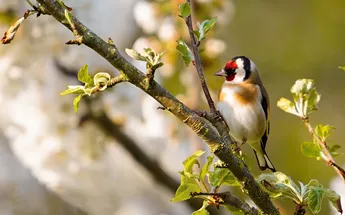Gardening has many benefits for older people and is an excellent way to bring you closer to nature while providing a sense of accomplishment and relaxation. Whether you're looking to grow your own fresh produce or simply want to create a beautiful outdoor space it really is an enjoyable activity for people of all ages and skill levels.
It can be overwhelming to know where to start, whether you have a large garden or a small balcony. In this blog, we will provide some tips for beginners to help you get started on your gardening journey.
Gardening tools
Having the right garden tools is essential for maintaining a beautiful and healthy garden. When you have the appropriate tools, you can complete the tasks in your garden more efficiently and with less physical strain. Our handy gardening tools checklist is downloadable so that you can take it along to a local garden centre or tick off what you already have. With the right tools, you can make the most of your time in the garden and ensure that your plants thrive.
Start small
Think about the size of the space that you have. If you have a large garden, start in small areas that you can manage easily - you could start by growing herbs or flowers in a pot or start with a small raised bed. As you become more confident and experienced, you can gradually increase the areas in your garden or space.

Choose the right location
When choosing a location for your plants or flowers, consider the amount of sunlight, water, and drainage the area receives:
- Most plants require at least six hours of direct sunlight per day, so choose a spot that gets plenty of light.
- Make sure the area has good drainage, so your plants don't get waterlogged or use plant pots with holes for additional drainage.
- Make sure the area is easily accessible, so you can tend to your garden regularly.
Prepare the soil
Good soil is essential for healthy plant growth. Before planting, make sure you have prepared the soil properly by removing any weeds or debris and adding organic matter, such as compost or well-rotted manure, to improve the soil's fertility. Next, loosen the soil with a garden fork or tiller, and add organic matter like compost, peat moss, or well-rotted manure. This will help to improve the soil structure, drainage, and nutrient content.
Choose the right plants
Choose plants that are suitable for your location and the conditions in your garden, by researching the plants you’re interested in growing. Consider factors such as the amount of sunlight, water, and soil type they need. When buying plants, they often come with a care label to tell you how much light they need, how hardy they are, and how much space they need to grow. You can research the plants you are interested in growing to ensure they are suitable for your garden - one way is using plant apps, asking in your local garden centre, or using the plant searcher on the RHS website.
Plant your garden
Once you've chosen your plants, it's time to plant them. Follow the instructions on the seed packet or plant label to determine the correct spacing and planting depth for each plant. Some plants need to be planted in rows, while others can be planted in groups. Remember to water the plants immediately after planting them.

"If you can dream every square inch of a garden, every day of its year, and every flavor of its season, then you can make it happen".
- Monty Don
Water and feed your garden regularly
Watering is one of the most important aspects of gardening. Most plants require regular watering, especially during hot weather. However, be careful not to overwater your plants, as this can lead to root rot. Generally, it’s recommended to water deeply and less frequently, as this will encourage deep root growth. You can also fertilize your plants with a slow-release fertilizer to ensure they receive the necessary nutrients.
Prune and deadhead regularly
Pruning and deadheading are important maintenance tasks that can help to keep your plants healthy and promote new growth. Remove any dead or diseased foliage regularly, and prune back any overgrown branches to maintain the shape of your plants.
Keep pests and diseases under control
Pests and diseases can quickly damage your plants if not controlled. Regularly inspect your plants for signs of pests and diseases and take action promptly if you notice any issues. There are many organic methods for controlling pests and diseases, such as using insecticidal soap or neem oil. You could also consider companion planting, insect-repelling herbs, and hand-picking pests
Next steps
Gardening is a fulfilling and rewarding hobby that can provide you with fresh produce and beautiful outdoor space. By following the tips in this beginner's guide, you can get started on your gardening journey and create a garden that you'll be proud of. Remember to start small and choose plants that are easy to grow, and soon you'll be on your way to becoming a successful gardener. Here are some more useful blogs to help you with your gardening journey.
How to encourage bees into your garden
Bees play a vital role in pollinating plants, helping them to produce fruits, vegetables, and seeds. Without bees, our gardens and crops would struggle to survive, so it's important to encourage them into our gardens whenever possible.
How to upcycle your garden furniture
It is nice to spend time in the garden in your favourite sunchair, but outdoor furniture can sometimes look a little worse for wear! Here we have some ideas for making your furniture look new again.
A guide to encouraging wildlife in your garden
No matter how big or how small your garden is, you can do your bit to encourage and help the wildlife around you.


